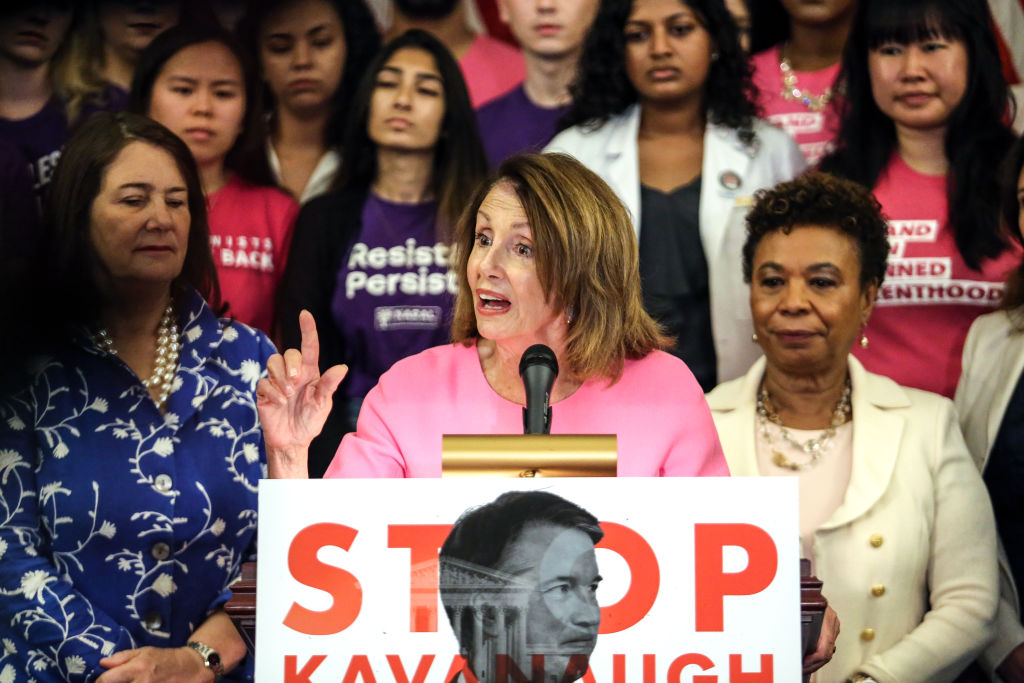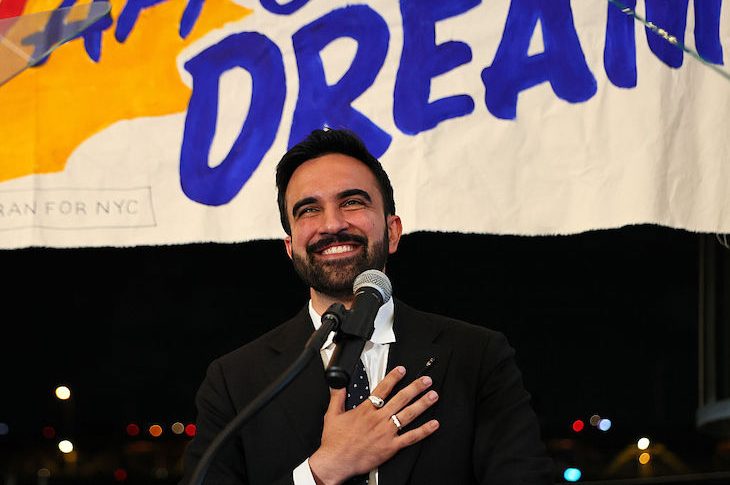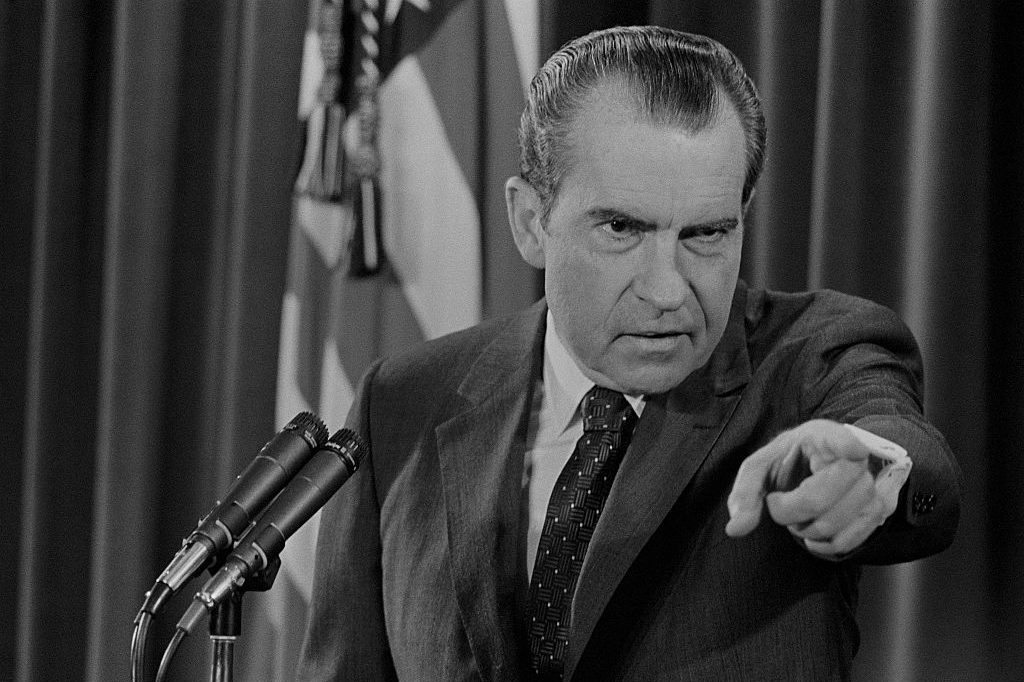What does it say about President Trump if Republicans lose control of the House of Representatives after the November 6 midterms? If your answer is that Trump is failure or Trump is a disaster for his party, then you have to say the same thing about President Clinton and President Obama, both of whom also lost the House in their first midterms. Here’s my prediction: the GOP will indeed lose control, but the swing to the Democrats will be smaller than the swing to Republicans was in 1994 (54 seats) or 2010 (63 seats). Trump will have outperformed Clinton and Obama, and on strictly empirical grounds — setting aside anti-Trump bias, including among NeverTrump media conservatives — any honest analyst will have to admit as much.
The massive defeats suffered by Democrats in the middle of the first terms of Clinton and Obama did not, of course, prevent either of those presidents from winning re-election two years afterward. Conversely, Republicans under George H.W. Bush lost only eight House seats (net) in 1990, but Bush nonetheless fell short in his 1992 re-election bid. Midterms simply are not a reliable verdict on a president’s job performance or re-electability.
But Republicans are doing especially badly in statewide races in some of the key places that Trump won in 2016 — states he can’t afford to forfeit if he hopes to win a second term. Democrats have an edge, in some cases a commanding lead, in Senate and gubernatorial polling averages in Michigan, Wisconsin, Pennsylvania, and Florida. Even if Scott Walker pulls through in the governor’s race in Wisconsin and Rick Scott prevails over Sen. Bill Nelson in Florida — two toss-up contests in which the Democrats have the narrowest of leads — the report from battleground states on November 6 is going to be dismaying for Republicans. In Pennsylvania and Michigan, the races aren’t even close. The Trump map is turning blue.
Yet Trump has three things going for him in the run-up to 2020. The first is simply that he’s a more formidable candidate than anyone the Democrats are beating in the battlegrounds this year. Republican recruitment for 2018 was lousy. Rhetorically and ideologically, the party was transformed in 2016, not only by Trump but by the grassroots enthusiasm he stoked. Talent pools don’t change nearly as quickly as voter sentiment or political language, however, which means the 2018 GOP either been unable to field Trump-like candidates or has had to make do with far less than perfect ones. Lou Barletta, for example, the GOP’s nominee for Senate in Pennsylvania, has a record on immigration to warm the heart of any Trump supporter. But his campaign organisation has been worse than lacklustre. Corey Stewart, the Senate nominee in Virginia, has run as a hard-right insurgent, but he lacks the populist touch that allowed Trump to expand his base in 2016 and made him more than just an anti-left candidate (though he was certainly that, too). Ron DeSantis, as the party’s pick for governor of Florida, is having better luck than Stewart as a candidate who reflects something of the Trump attitude — yet he too is not really a voice for a ‘Republican Workers’ Party.’ In the Trump-era Republicans have to be anti-left, but that by itself is not enough.
President Trump knows this, however. And his second advantage in looking ahead to 2020 is that he’ll have a useful foil in the year leading up to the election: a Democratic House speaker, most likely Nancy Pelosi. Hillary Clinton had in fact been a formidable opponent — she was for Barack Obama in the 2008 contest for the Democratic nomination, and she would have beaten any Republican but Trump in 2018. None of the other Republicans that year had Trump’s appeal to the industrial Midwest and Pennsylvania, states that have been out of the GOP’s reach since the 1980s. And no Republican was likely to take blue-tinted Virginia away from the Democratic column in 2016. But as strong an opponent as Hillary Clinton actually was, she nonetheless brought out even greater strength in Trump, who thrived on taking the offensive. Nancy Pelosi will similarly help Trump to focus and concretise his attacks — and however one judges Clinton, Pelosi is clearly even less appealing to Middle America. Trump will not face an up-or-down referendum on himself in 2020, he’ll be one of two choices before the country. And the other choice, the party of Pelosi, is less popular than he is.
By 2020 Pelosi won’t be the only face of the Democratic Party, of course. Yet Trump’s final advantage is that the likely contenders for the Democratic presidential nomination all have obvious downsides. Joe Biden might be the most formidable in terms of how the crucial Rust Belt states relate to him. Biden might not be left-wing enough, either in identity politics or economics, for the Democratic Party of 2020 however, particularly if the leftist base is reminded of Biden’s role in the Crime Bill of 1994. Other than Biden, the only Democrat who commands double-digit support within the party in CNN’s first poll of 2020 nominee possibilities is Bernie Sanders. (The gulf between them is 20 points: Biden is favoured by 33 per cent of those polls, Sanders by 13 per cent.) Sanders will face staunch opposition from the party’s moderates: the NeverBernie faction of the Democrats is a real thing, unlike the NeverTrump Republicans, who are largely an elite media phenomenon.
Elizabeth Warren may be somewhat more acceptable to the party establishment than Sanders is, but if anything it’s harder to imagine her energising the Democrats’ non-white voters. The other two hopeful who poll best among the party, senators Kamala Harris and Cory Booker, may or may not be able to turn out black voters and young voters at the rates that Barack Obama did, but on the way to the nomination they will be savaged by the economic left for their cosiness with corporate interests. If it’s difficult to see Sanders or Warren doing better with non-whites than Hillary Clinton did, it’s equally tough to envision Harris or Booker doing better with Rust Belt voters than Trump. America is not yet a majority-minority country, but the Democratic Party is already splintered by identity groups and deep class divisions. Republicans, by contrast, have a message of unity, in the form of nationalism. The time when Democrats could make such an appeal — as they did in the New Deal and during the early 1960s — seems long gone. Obama was a personally unifying figure for the party, yet at the end of his administration it was clear that he had failed to resolve the tensions within his party, which promptly defaulted back to the Clinton dynasty.
A Republican drubbing in House elections next month is to be expected: the only remarkable thing will be if the GOP clings to power. The Republicans are undergoing forced evolution, thanks to Trump, and developing into a 21st-century nationalist party will take time. But the Democrats have deferred their own confrontation with the post-liberal realities of politics. As a result, their party is fractured into a postmodern identity bloc, an old-fashioned social democratic one, and a formerly regnant Clintonite establishment. It would take a figure like Donald Trump to settle the Democrats’ differences, but they don’t have one. The Republicans do — for now and in 2020. Come 2024, though, we’ll see whether the GOP is still the party of the future or whether the Democrats have found the leader to break their impasse.

























